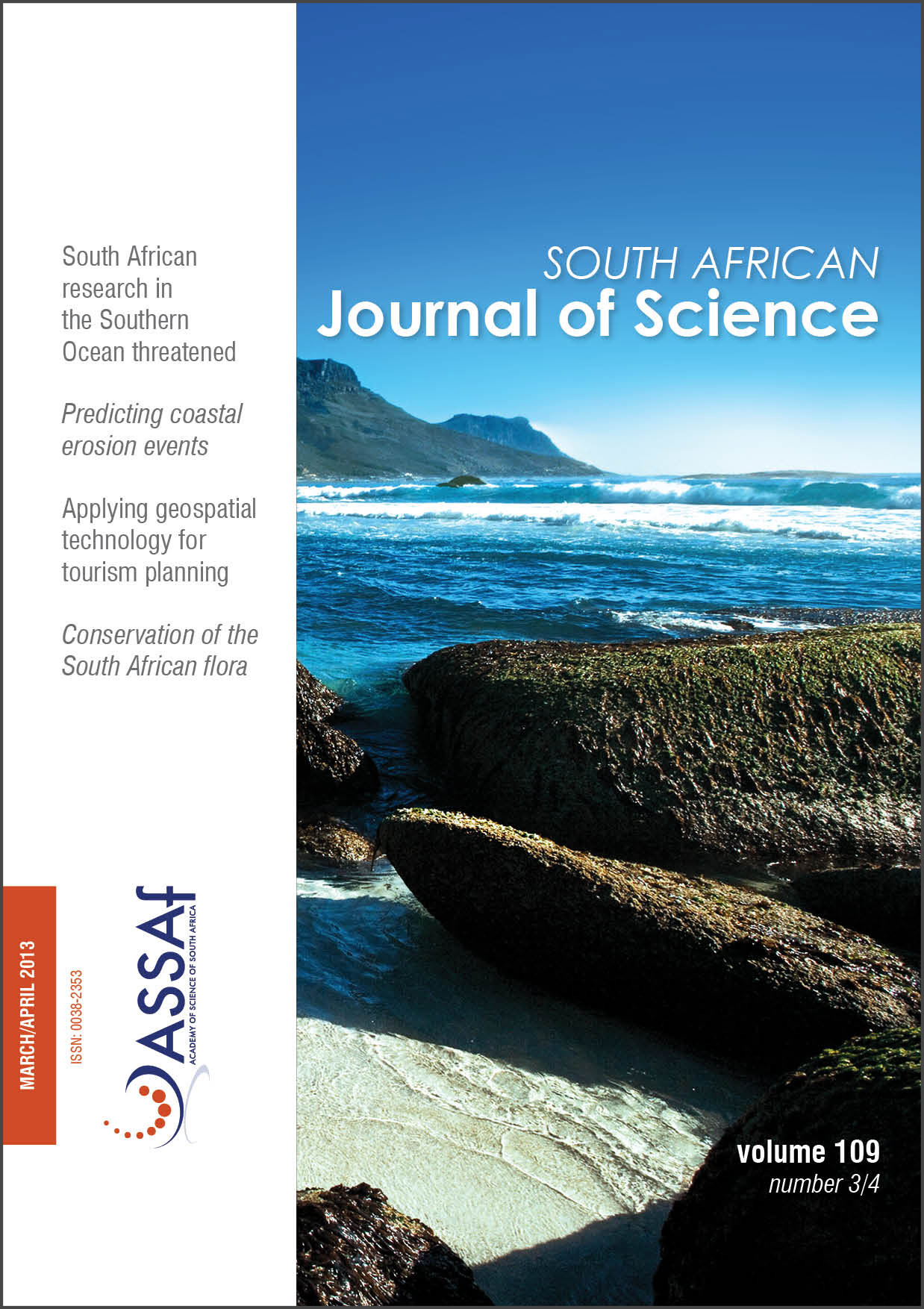Metal and flavonol contents of Moringa oleifera grown in South Africa
DOI:
https://doi.org/10.1590/sajs.2013/835Keywords:
metal content, Moringa oleifera, myricetin, kaempferol, quercetin, vegetablesAbstract
Moringa (Moringa oleifera) is a plant that is commonly consumed as a nutritional supplement by some communities in South Africa. Contamination of moringa with toxic heavy metals could be deadly for consumers. However, some metal elements are essential for consumers in trace amounts. We therefore investigated the concentrations of heavy metals, including major and trace nutrient elements, in the soil and in the leaves and flowers of moringa grown on two farms in South Africa. After total digestion in the microwave, the concentrations of metals were determined using inductively coupled plasma optical emission spectroscopy. No toxic heavy metals were detected in the leaves and flowers of moringa. On average, moringa contained higher concentrations of Ca (18 500 mg/kg) and Mg (5500 mg/kg) than selected vegetables (spinach, cabbage, cauliflower, broccoli and peas). The concentrations of other major nutrients in moringa were similar to those of the vegetables. Based on reports of antioxidant activity, we also investigated the concentrations of flavonols (myricetin, quercetin, kaempferol) in moringa leaves and flowers in comparison with the selected vegetables. A high concentration of flavonols is related to antioxidant activity. Plant and vegetable materials were extracted under reflux using an acidified methanol (1% HCl) solution and the flavonols were identified and quantified using reverse-phased high-performance liquid chromatography with UV detection. Moringa leaves had higher concentrations of myricetin (1296.6 mg/kg), quercetin (1362.6 mg/kg) and kaempferol (1933.7 mg/kg) than vegetables (spinach: myricetin 620.0 mg/kg, quercetin 17.9 mg/kg, kaempferol 215.3 mg/kg). No major differences were found between the plants growing on the two farms. Moringa is thus nutritionally valuable and safe to consume.
Published
Issue
Section
License

All articles are published under a Creative Commons Attribution 4.0 International Licence
Copyright is retained by the authors. Readers are welcome to reproduce, share and adapt the content without permission provided the source is attributed.
Disclaimer: The publisher and editors accept no responsibility for statements made by the authors
How to Cite
- Abstract 714
- PDF 1034
- EPUB 198
- XML 252













.png)